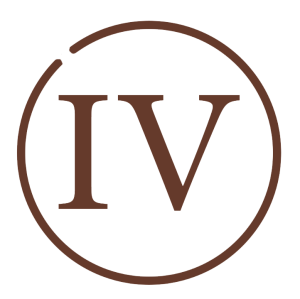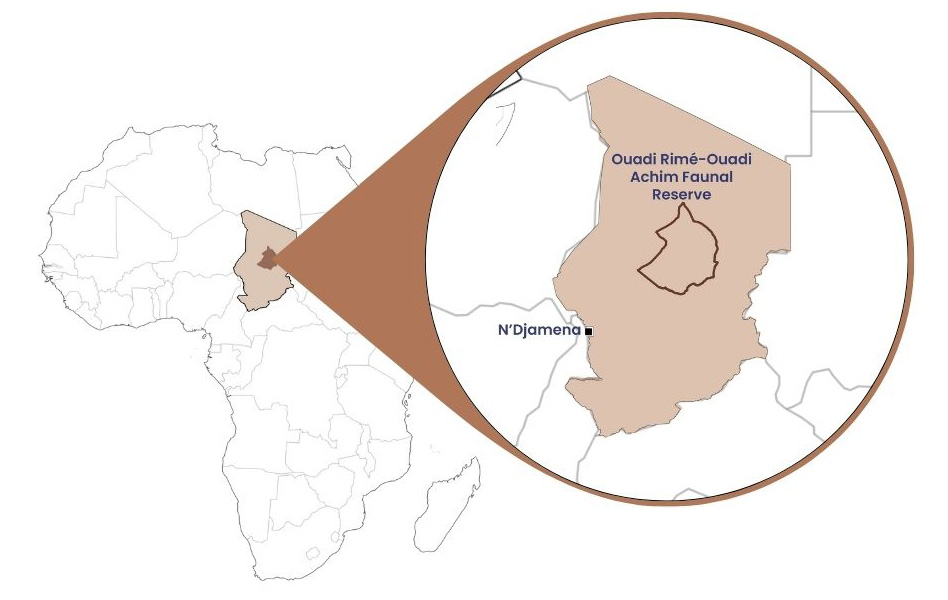
Ouadi Rimé – Ouadi Achim Faunal Reserve
Chad’s Ouadi Rimé–Ouadi Achim Faunal Reserve (OROAFR) is a unique and critical conservation landscape — and one of the only fully functional protected areas remaining in the North Sahelian biome.
Spanning nearly 78,000 km², it is the largest protected area in Chad and one of the largest in Africa. It spans three major habitat types: Sahelian wooded grassland, sub-desert grassland, and desert. The reserve features wadis, fixed dunes, and floodplains that enhance its ecological diversity and support unique Sahelo-Saharan flora and fauna. Iconic and endangered species, such as the addax, scimitar-horned oryx, dama gazelle, dorcas gazelle, African wolf, stripped hyena, and many others, roam freely across its vast grasslands. OROAFR is also an important flyway for migratory birds and home to thousands of pastoralists and transhumants who depend on its natural resources.
Located in central Chad, the reserve takes its name from two prominent wadis, the Ouadi Rimé in the south and the Ouadi Achim in the north.
Challenges
Once a haven for wildlife, the reserve has faced decades of pressure. Civil unrest and uncontrolled hunting led to the local extinction of several species during the late-1970s and early-1980s.
Today, pressure on its fragile ecosystems continues from overgrazing, bushfires, abusive logging, agricultural encroachment, and the impacts of climate change and desertification. Fire, in particular, reduces the availability of grazing while destroying the nests of ground-nesting birds, like bustards and plovers, diminishing the reserve’s biodiversity.
ID Card

Year of creation:
1969
Area:
77,950 km2

IUCN Protected Area Category:
Category IV: Habitat management area / Species Management Area

Reserve Management Plan 2023–2032
Other designations:
Key Biodiversity Area of international significance (KBA)
Important Bird and Biodiversity Area (IBA)


A collaborative approach to conservation
In response to international calls for conservation action for Saharan antelopes, OROAFR began receiving renewed attention in the 2000s. In 2008, Sahara Conservation spearheaded efforts to develop a strategy for the reintroduction of the scimitar-horned oryx in OROAFR based on the numerous captive-bred animals that luckily existed outside of Africa.
In March 2016, the first oryx returned to the wild after decades of absence. Since then, over 380 oryx have been transferred to Chad and released into the reserve, with the wild population now nearing 600 individuals. This success led to the species being downlisted from “Extinct in the Wild” to “Endangered” on the IUCN Red List of Threatened Species.
Building on this progress, a multi-species approach was launched in 2020 that included the reintroduction of the Critically Endangered addax and the reinforcement of the dama gazelle population.
The very survival in the wild of several species depends on conservation efforts undertaken in the reserve.
Securing the future of the reserve: long-term governance of the OROAFR
In July 2025, Sahara Conservation and the Government of Chad signed a 10-year management agreement for the OROAFR. This landmark public-private partnership formalizes over two decades of collaboration and establishes a shared governance model for the reserve.
At the heart of this agreement is a 10-year Management Plan developed with local stakeholders. It outlines zoning strategies creating strict conservation areas where human activities like grazing and farming are regulated to safeguard key habitats and wildlife.
Under this agreement, Sahara Conservation is officially entrusted with the day-to-day management of the reserve. Responsibilities include wildlife monitoring, support to law enforcement, habitat restoration, and community engagement. Local communities are very much at the center of this process to ensure that conservation and sustainable development go hand in hand.

This collaborative governance model now serves as a flagship example of how biodiversity conservation and sustainable development can be effectively integrated in one of the world’s most challenging environments.
Looking ahead: a shared responsibility
As the lead implementing partner and primary fundraiser for the reserve, Sahara Conservation is now focused on securing the financial resources needed to deliver on the vision set out in the management plan. Supporting the OROAFR means investing not only in endangered species like the scimitar-horned oryx and addax, but also in resilient landscapes, thriving ecosystems, and communities that depend on them.
To make this vision a reality, we need your support. Every contribution—large or small—helps sustain this globally significant conservation area and ensure its future for generations to come.
Our partners


















